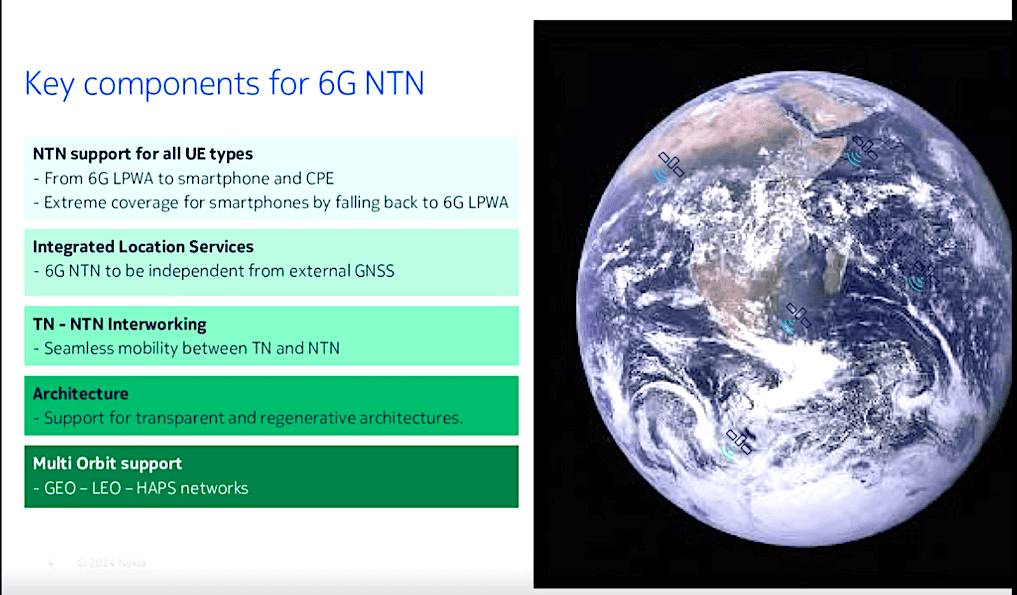 (Source: Nokia)
(Source: Nokia)
PARIS — Information technology provider Nokia is urging the 3GPP standards-setting body to incorporate satellite technology — non-terrestrial networks — into its 6G design from the start and says a key feature should be to move location services to the satellite network and out of 6G user devices.
The goal is to save cost and power, and to take advantage of 6G-compatible satellites that can perform the location function just as well, with less likelihood jamming or spoofing, than occurs with having devices using GPS and other global satellite navigation systems (GNSS) including Europe’s Galileo.
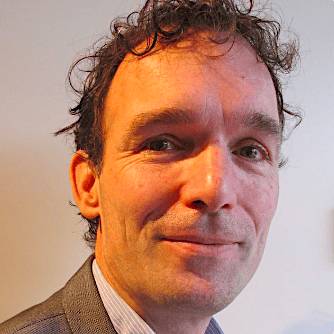 Jeroen Wigard. (Source: Nokia)
Jeroen Wigard. (Source: Nokia)
“The biggest thing we want to change is time-integrated location service,” said Jeroen Wigard, who leads Nokia Standards’ research project for 5G standardization for UAVs and non-terrestrial networks (NTN).
“In 5G, the whole synchronization and access to the system relies on the device knowing its location. This is why a GNSS chip is mandatory for devices in 5G,” Wigard said April 18 during C21-virtual’s “5G Journey” videoconference.
“We would like to get rid of this to save cost and power consumption. We have satellites flying round providing 6G service, so we would like to have those satellites determine the position, which then can be used for synchronization. If we design it right, we can have at least some indoor coverage. Based on reference signals from the satellite, the UE [user equipment] can calculate where it is.
“It should not require signaling back and forth from the network because then one of the goals — reduced power consumption — is gone. So that’s important.”
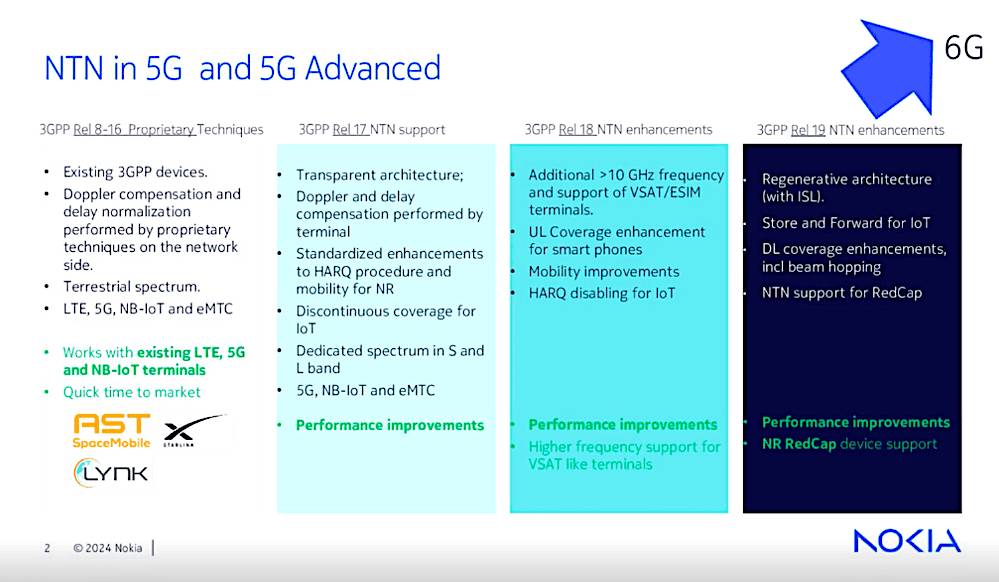 (Source: Nokia)
(Source: Nokia)
Nokia and Deutsche Telekom designed the European Aviation Network for European commercial jets using Viasat Inc.’s S-band satellites and, more importantly, a network of signal repeaters to boost capacity when the satellite was not available.
A new satellite service, known as direct-to-device, or direct-to-cell, is being created from 3GPP’s standards with advances that include NTN. Early applications include satellite companies partnering with terrestrial mobile network operators to use MNOs’ licensed spectrum to deliver connectivity to unmodified cell phones out of terrestrial network coverage.
Companies testing this model include AST SpaceMobile, Lynk Global and SpaceX’s Starlink, each working with different MNOs.
Nokia is providing the base stations for AST SpaceMobile, which currently has one demonstration satellite in orbit and plans to launch five more this year.
AST “has shown a 14-Mbps connection, and a video call as well, over satellite,” Wigard said. “So this is happening. It can be done,” he said.
But while the user devices need no modification, the network does need some modification to handle the fact that a satellite is much further away than a cell tower and, in the case of low-orbit satellites, moves quickly in and out of a phone’s coverage.
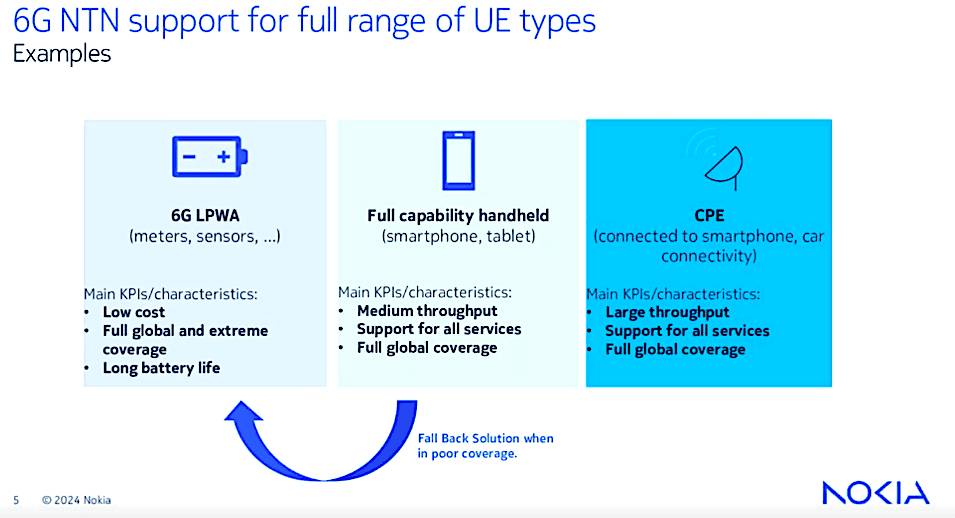
The 3GPP’s Release 17 moved part of the responsibility for adapting to the specifics of a satellite link to the user equipment.
Wigard said NTN should be part of 3GPP’s first 6G release, rather than “tacked on” late in the process, as was the case for 5G.
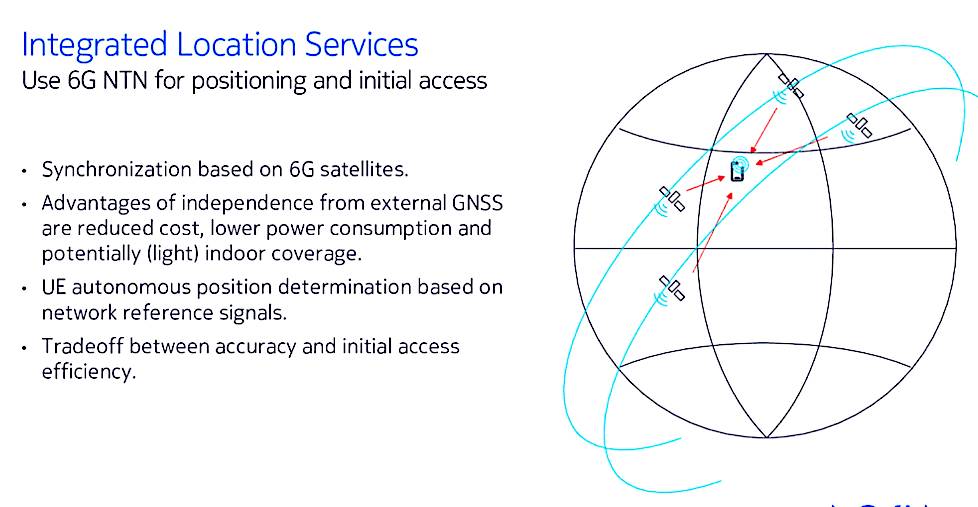 (Source: Nokia)
(Source: Nokia)
Release 17 also addressed satellite-based Internet of Things — similar to D2D but usually with smaller data packets — by addressing “discontinuous coverage,” meaning the gaps between when one satellite has flown out of line of sight but before another arrives to take its place.
The Release 17 specifications include features that avoid a situation where a ground sensor is constantly searching for a signal, draining its battery.
The 3GPP work has identified L- and S-band for NTN applications that do not use terrestrial spectrum. Globalstar with Apple, EchoStar, Omnispace, Iridium Communications and Viasat are designing networks that will require L- or S-band chips to be installed into next-generation smartphones.
The D2D sector is still debating whether using MNO spectrum to unmodified devices, but with use limited to the licensed territories of the MNO partners and the need to include buffer zones to prevent interference, is superior to the globally licensed mobile satellite spectrum, which will take more time to become widespread as device makers beyond Apple include the new chips.
The 3GPP Release 19, still in the works, adds spectrum above 10 GHz for VSAT units, satellite terminals with larger and more powerful antennas for installation on planes, trains, automobiles and maritime vessels.
Release 19 also promises to allow the satellite to handle much of the work done up to now by the terrestrial base station, and to make way for inter-satellite links.
One feature would use a low-power, wide-access service to user devices for what Wigard called “extreme coverage.”
These are situations where a user with an NTN service is stuck in an area with mountains or other obstructions that prevent a satellite signal.
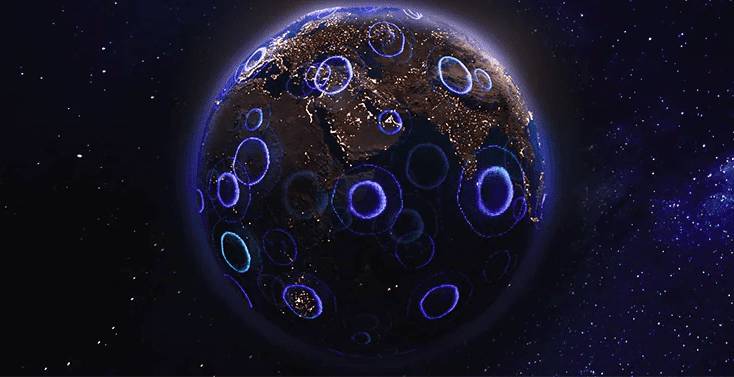 (Source: Nokia)
(Source: Nokia)
“In principle, 6G [low-power, wide-area] could play that role,” Wigard said. “And if we make it in a 6G phone, those are easy to integrate and we can have this fall-back solution for smartphones.”
The other extreme of the out-of-terrestrial-coverage use case would be users carry a portable device that can provide higher throughput, enough for a video call when it’s connected to a smartphone.
Wigard said Nokia is working to ensure that 3GPP includes NTN into its 6G standards from the start, rather than as a strap-on that is included only late in the process.
“Nokia’s position is that NTN should be part of 6G from day one,” he said. “In 5G, it was added at a relatively late stage, and patched into the system. 5G was not designed for NTN.”
